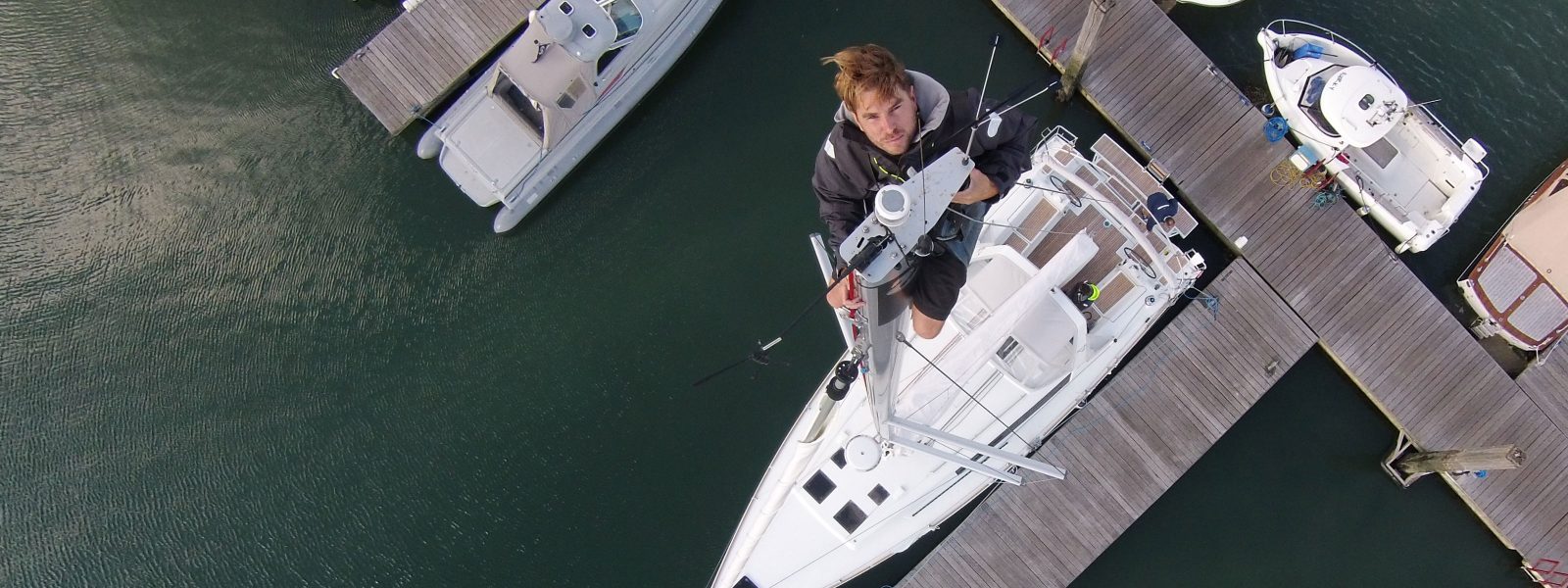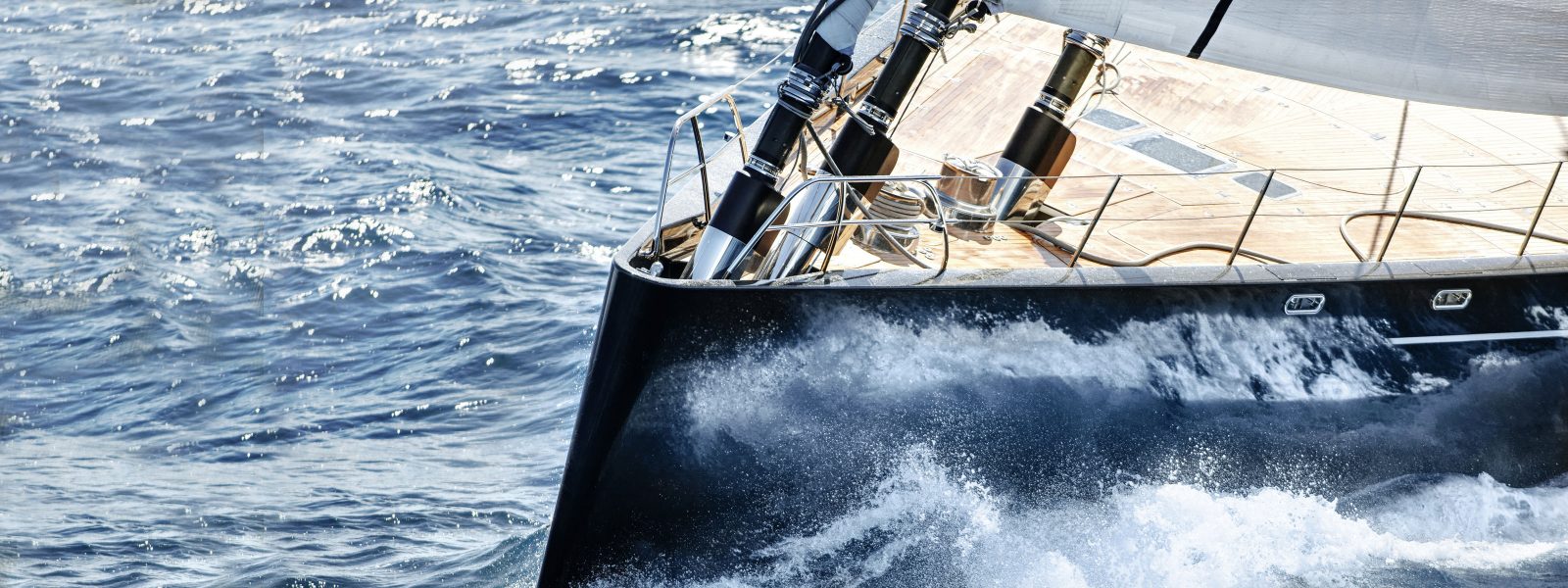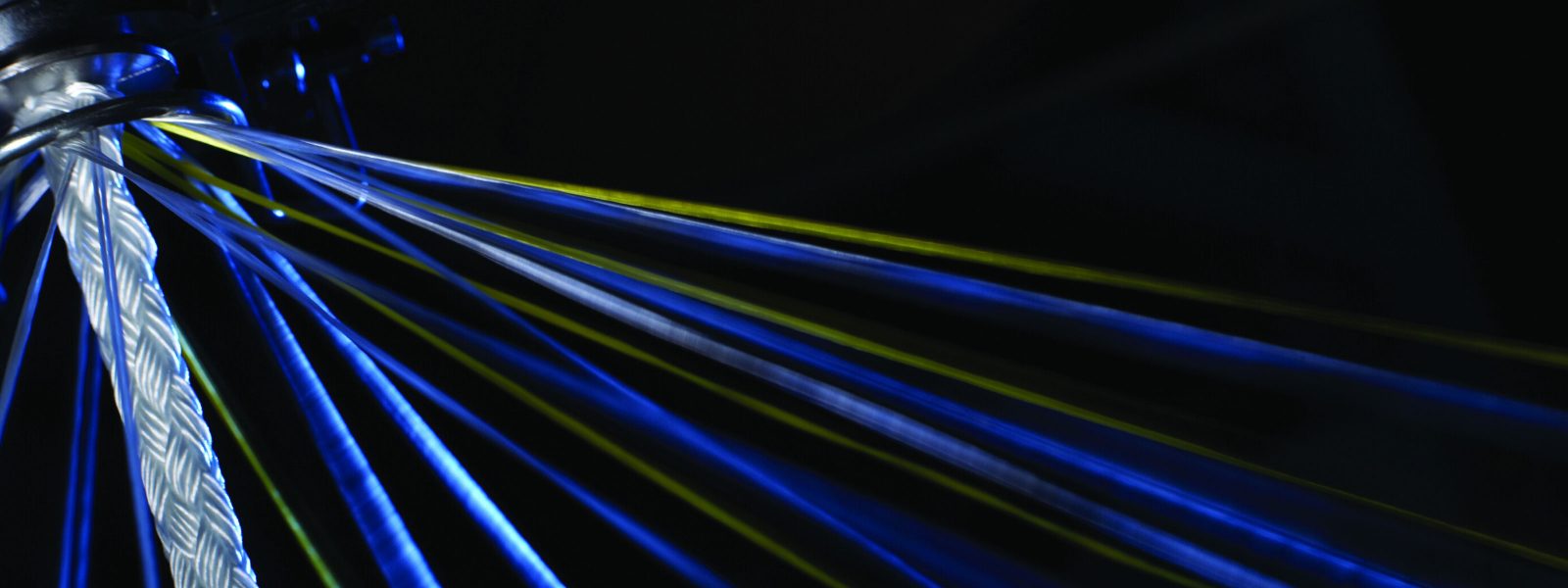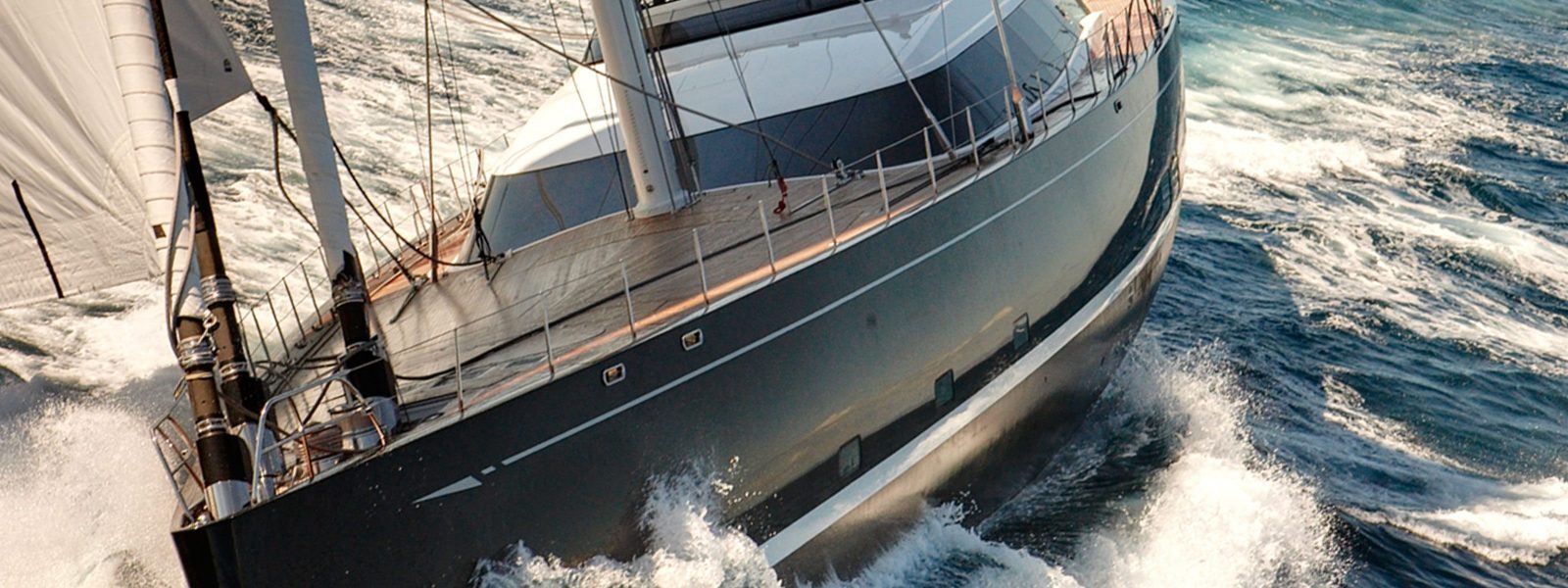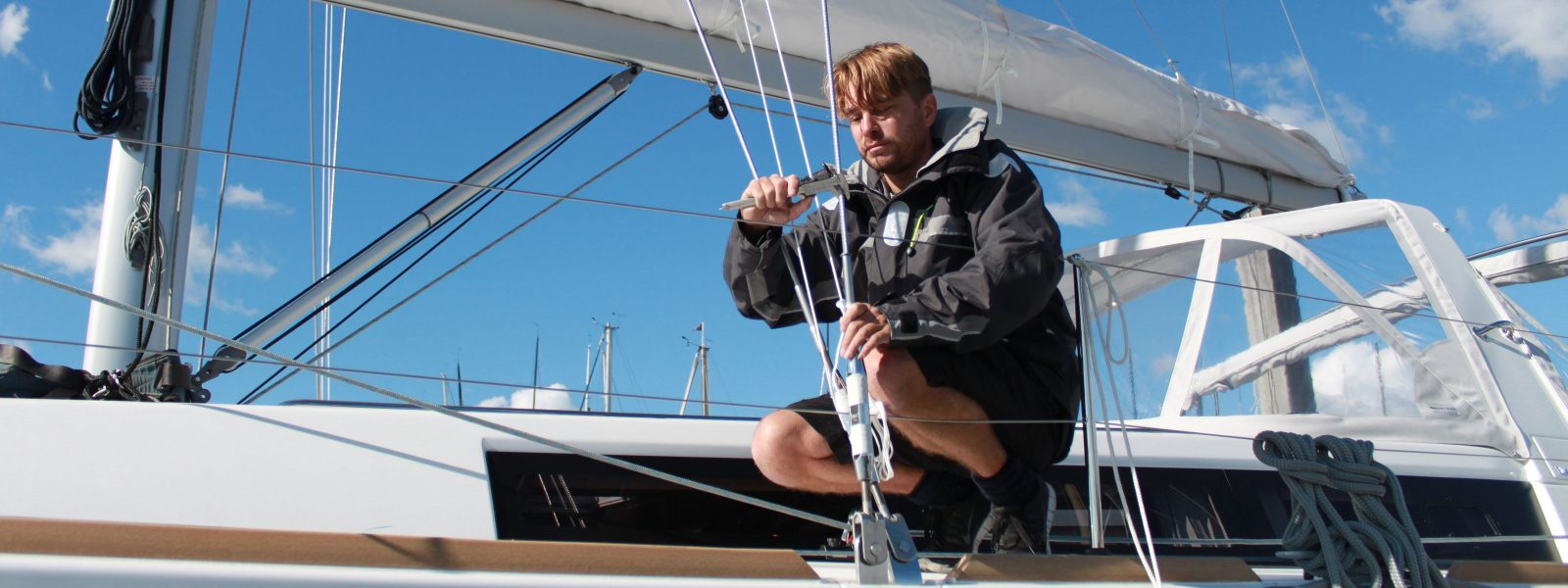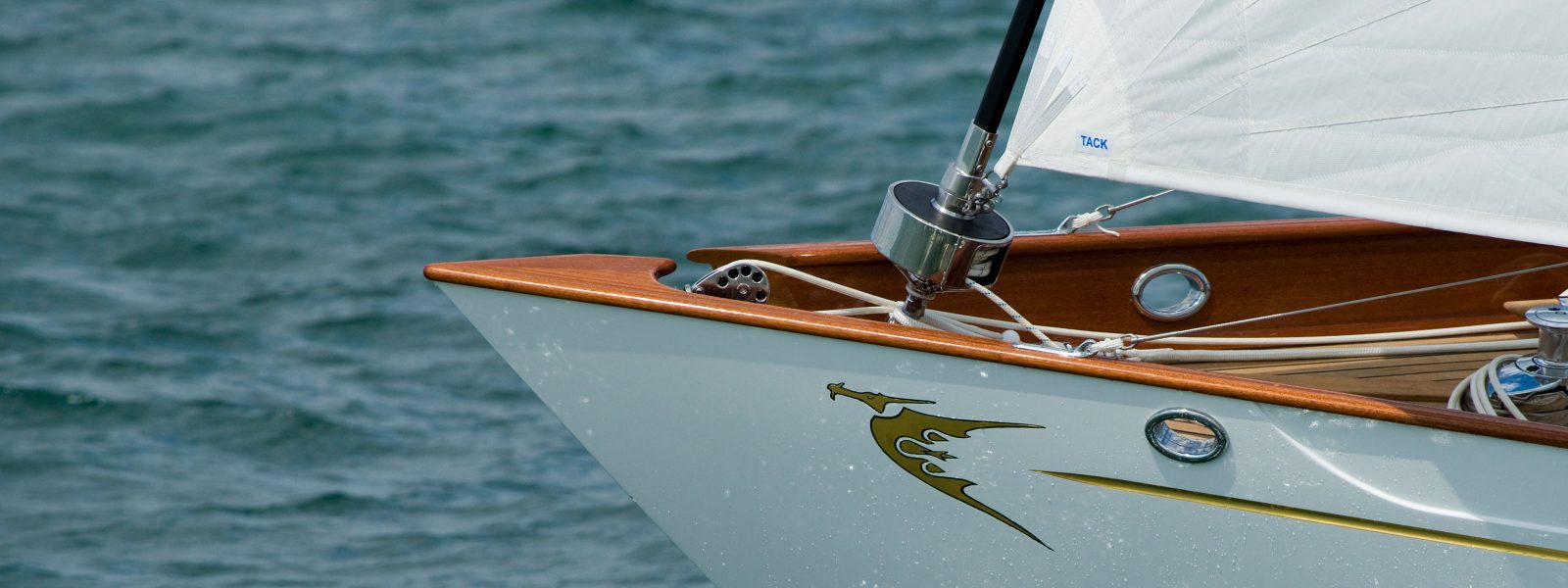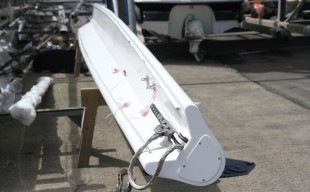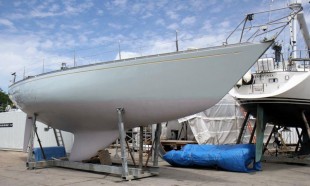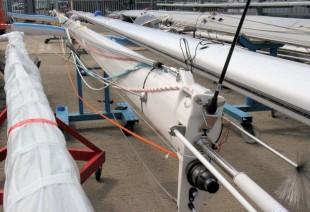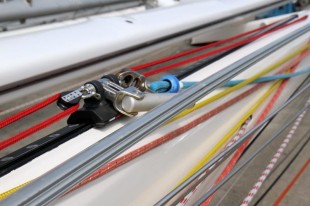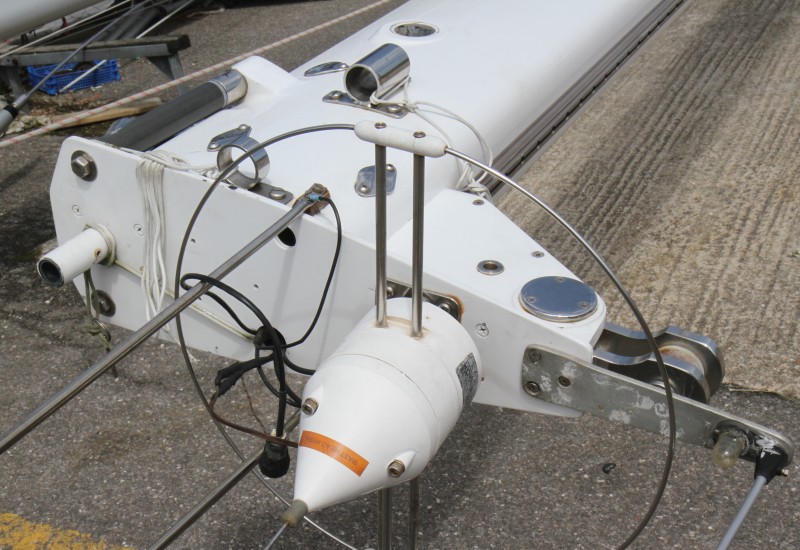Interview with Dennis Fisher – Advanced Rigging & Hydraulics.
Mark Jardine talks to Dennis Fisher of Advanced Rigging and Hydraulics about the services they provide and what options are open for yacht owners to modernise their hardware and rigging.
Mark Jardine: What do you do as a company?
Dennis Fisher: We supply a lot of the boat builders and other riggers with furling systems and hydraulic equipment for new projects or refits. We also manufacture rod rigging, composite fibre rigging and we offer a rigging service whenever it’s required to commission new boats or upgrade boats; whatever it is you want from the chain-plate upwards.
Mark Jardine: Is your work mainly based in the Hamble area or can you provide your services anywhere in the UK and around the world?
Dennis Fisher: We can offer services abroad and we perform rig inspections all over the UK. We do commissioning work abroad, we do repairs abroad and we can do re-rigging abroad. Most of our work is based in the UK because of the number of boats here. In busy periods we are limited by our capacity of staff to some extent but we can work wherever we’re required.
Mark Jardine: Looking at upgrades to boats, what work are you currently doing on yachts that is making a difference, in your opinion, to those yachts?
Dennis Fisher: Some of the older racing yachts, or the old classic yachts, are going towards either re-rigging with rod to take a bit of weight out, or going to carbon fibre masts for replacement because the cost of carbon fibre isn’t so expensive now. With the difficulties in obtaining aluminium section and its high manufacturing cost in bespoke rigs such as those used by the old Nautor yachts and Baltics etc., the carbon rig is not so far away in price and makes a real difference to their performance as a replacement- it transforms the boats to a great extent. Hydraulics assist also with vangs and automated systems sometimes for even the smaller race boats. Where there’s big backstay travel we can put in motorised systems to wind up the coarse adjustment of backstays quickly, so rather than hand pump them you can now press buttons to take out the time it takes to get the vang down or the backstay back on after tacking. For the cruisers in-boom reefing is the game because of sail handling. But power’s the way forward if you can get your hydraulics to save time and energy.
Mark Jardine: You have a Swan in at the works at the moment. What’s being done to her and what changes will this make to the boat while sailing?
Dennis Fisher: The Sparkman & Stephens 44 is quite a handful downwind – the boats used to roll a lot. This boat’s having a hull re-profiling, a new carbon fibre rig, new rod rigging, new halyards which are now Dyneema rather the old, heavy braid on braid, so overall the rig weight is reduced significantly and that will transform the boat upwind with pitching and rolling reduced. She’ll be a different boat; a lot stiffer and it won’t heel over as much – it has the effect of additional crew on the rail. It’ll make a huge difference in performance.
Mark Jardine: So your services can take an old boat, a classic design, and really modernise it and give it a cost-effective upgrade to turn it into something completely different?
Dennis Fisher: Yes, that’s true, particularly with the older boats because the difficulties of getting a mast now in aluminium for a cost which is reasonable are mounting, also the sections are disappearing. So carbon now has become more cost-effective. We like to get involved with all types of boats, whether they’re for cruising or racing. A lot of our customers are offshore racers, they like to do rallies, they like to do races, they like to do things like the AZAB (The Azores And Back Yacht Race) and other long-distance events and we want to make sure they’ve got equipment on board that is reliable, not lightweight to the point where you worry about it, we still work to the old factors of safety that the designers would have added in the first place. We’re not making strength compromises anywhere, all we’re doing is making sure the factors of safety are still there but reducing weight significantly and increasing performance.
Mark Jardine: So combining the latest technology with original safety standards?
Dennis Fisher: We don’t compromise anything to do with factors of safety. We’re just into performance and weight reduction for those that want it.
Mark Jardine: On new builds, which yacht manufacturers do you work with?
Dennis Fisher: We’ve worked with Oyster since 1988. We’ve supplied their hydraulic Reckmann furlers for nearly every Oyster since then right up to today and to the 125ft. We supply Discovery Yachts with their furling systems electric and manual for their 57s and 55s. We’ve worked with everybody; Northshore, Nautor for the Swans, we’ve re-rigged a lot of Swans over the years – it’s the Swans and the Oysters that like to participate in the regattas and the adventurous offshore sailing so we do a lot of support work with their owners and skippers.
Mark Jardine: If you were talking to a yacht owner who maybe had a yacht which needed some work done, the rigging was getting a bit tired, what upgrade would you suggest would make the biggest difference for their enjoyment of the yacht, both cruising and racing?
Dennis Fisher: I think it depends what scale it is and what the boat is already equipped with. If it were a large cruiser with a carbon fibre mast already then you’d be looking at improvements such as halyard locks to take out compression in the mast. We’ve worked with boats where they’ve increased their performance by using halyard locks to reduce compression, systems for asymmetrics downwind with bowsprits – all of these things however do affect the mast significantly. For the smaller boats, which are limited in what they can do, then there’s the performance gains in halyards to look at. Owners will buy a sail and then put a stretchy halyard on it. We can improve their performance in terms of the running rigging specification and the materials used there. The only drawback where you have to be careful is that, with all this non-stretch material, the energy has got to go somewhere – it is no longer used in stretching the materials and if you have a gust it can rip the winch of the deck or a block will break, so we have to look at all those things and be very careful what we advise people to do. Just to go full-on with something that doesn’t stretch or something that’s going to save weight, all that energy is going to be transferred into the spar or into the boat somewhere. What a lot of people don’t understand when they say “I want one of those…” they could end up with blocks coming off the deck or something else. Everything’s available, but you need to be careful with what you select.
Mark Jardine: So you look at a yacht on an individual basis and make recommendations that will suit that yacht?
Dennis Fisher: Yes, we’ll do anything the owner wants, but sometimes we have to say, “Wait a minute, are you aware of what this will have as an effect on the boat?”. Bowsprits and code zeros are one of the most popular upgrades at the moment, but a lot of people don’t understand the difference between a downwind asymmetric sail and a code zero. It’s only when the front of the boat tries to become a cabriolet they realise what’s been going on. A code zero has a tensioned luff and for the bigger boats we’ve got systems that accommodate the loads and these systems are designed into the boat – we have hydraulic code zero furlers that roll things up at 125rpm. On the smaller boats many owners don’t realise how long it takes to roll up an asymmetric, they don’t realise that a code zero will add significant compression to the mast and that some require a bowsprit that will want a bob-stay to handle the loads. We’re here to help with all of that.
Mark Jardine: So an owner’s ideas can be significantly changed once they realise the practical implications?
Dennis Fisher: Often, They go to boat shows, they have discussions and it is very difficult to understand what the implications are on the mast if you’re not an engineer or if you haven’t got the experience – you can go out and buy a bowsprit, bolt it down, and then you find out all the jib boxes have collapsed and everything’s gone pear-shaped but you’ve no idea why. We know why, it shouldn’t have been there in the first place, and there are things you can do to avoid all these issues in terms of equipment that might do the job or you might want the boat altered to take the bowsprit. We’ve done it with some of the bigger Swans and others, we’ve actually fabricated carbon bowsprits which are removable so that the boat kept its lines, but they can go into their full-on race or regatta mode. A lot of people don’t know what we do and what we get involved in – we’ve been here servicing and rigging Maxi Yachts, Round the world yachts, Whitbread 60,s etc., and although our name has changed, we have been here for over 25 years we’ve worked all the way encompassing new developments.
Mark Jardine: So when an owner is looking to upgrade, really they should be coming to you first to find out what would make the best upgrades for their yacht and approach it that way around?
Dennis Fisher: We’re always willing to help. We’re not here to just sell, sell, sell stuff to people because we’re like a big garage for your boat; we have the rigging team, the hydraulics team, a mast repair man who works closely with all the other spar makers so he can do all the necessary alterations to the spar. Anything you want mostly can be done.
Mark Jardine: Dennis, many thanks for your time. It’s really given me an insight into what you do at Advanced Rigging and Hydraulics.
Dennis Fisher: You’re welcome, I hope it all helps!


